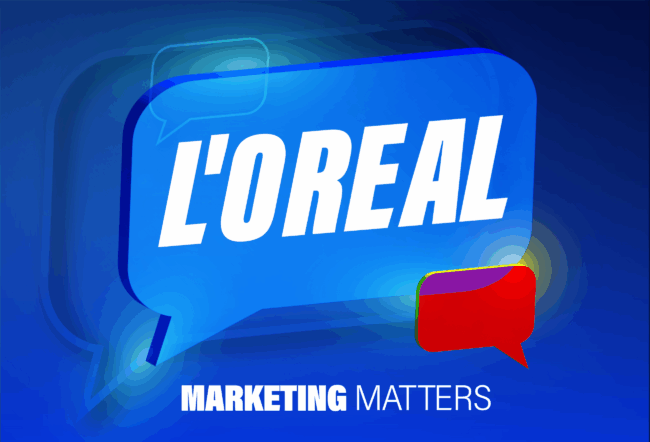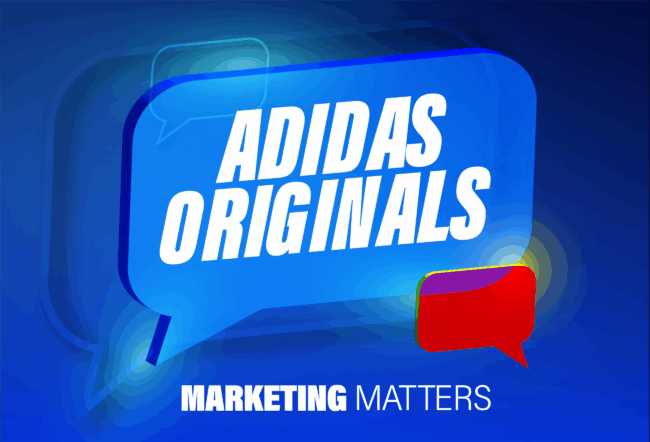Floyd Landis’s potential as a product endorser dropped faster than a cyclist speeding down a mountain road when he tested positive for synthetic testosterone after winning this summer’s Tour de France. Within the span of a week, Landis went from obscurity to fame to shame with hardly a moment in between to celebrate his (short-lived) victory.
Sports columnists like Selena Roberts of The New York Times denounced him as a symbol of the ills not just of professional cycling — which can’t seem to root out performance-enhancing drugs — but of all pro sports. And his positive drug test seriously set back the companies that had invested tens of millions in him and his team in hopes of profiting from a victory in cycling’s highest-profile event. Within weeks of the positive test, Phonak, a Swiss hearing-aid maker, announced that it would drop its sponsorship, as did iShares, a subsidiary of Barclays, a British bank. iShares also said that it would no longer fund any pro-cycling team or event.
Landis, of course, isn’t the only celebrity or athlete who managed to misbehave this summer. The sweltering season has offered up a rash of bad deeds by famous people — positive drug test by sprinter Justin Gatlin, a nasty head-butt of an opponent in the World Cup final by French soccer player Zinedine Zidane, an anti-Semitic tirade by actor Mel Gibson after he was caught driving drunk, and the arrest of Philadelphia Phillies pitcher Brett Myers for beating his wife on a street in Boston. And looming over them all is the big figure of Barry Bonds, slugger for the San Francisco Giants who’s chasing Hank Aaron’s home-run record while being hounded by journalists and prosecutors who say he uses steroids.
These episodes aren’t just fodder for People or Sports Illustrated. In today’s economy, athletes and celebrities push all manner of products and services, and their travails can tarnish, by association, the brands and companies that they endorse.
“The perils of these endorsements are consistently underestimated,” says Max Muhleman, a Charlotte, N.C., sports-marketing consultant. “It’s easy to go too fast. The excitement of the moment at the peak of someone’s celebrity tends to overwhelm any reservations about his or her character.” In their haste to sign a hot athlete or celebrity, Muhleman says, companies often overlook past incidents that may portend future problems.
Sneakers, Underwear and Soup
Like much in marketing, athlete and celebrity endorsements are as much art as science. Research makes clear, for example, that stars can create halos around brands, giving consumers good feelings about a company, says Wharton marketing professor Americus Reed. What’s less clear is whether, on average, endorsements lead to greater sales — or at least big enough jumps to justify the hefty sums that companies cough up, Reed adds. Among stock-car racing fans, for example, they clearly do. “I have videotape of a focus group where Nascar fans are saying, ‘If my driver endorses such-and-such oil, then I’m going to buy that product, too, because doing that supports my driver and helps him win.'”
But in other fields, consumers won’t buy something just because of an athlete’s or celebrity’s halo. “When you sit down and do the math and you’re trying to come up with a return-on-investment number, sponsorships can be a real crap shoot,” says Jennifer Miller, director of marketing for Seven Cycles, a high-end bicycle maker in Watertown, Mass.
Even so, Seven has sponsored two professional mountain bikers — Olympian Mary McConneloug and her boyfriend, Mike Broderick — for five years. Together, they comprise Team Seven and ride the company’s bikes, wear its logos on their clothing and make appearances on its behalf. “We do [these sponsorships] for the visibility and sense of legitimacy they give to our product,” Miller says.
What’s more, McConneloug has a reputation in cycling circles as a good citizen. She’s known, for example, for thanking volunteers at water tables during races. “Mary agonized when we were talking about co-sponsors for the team,” Miller recalls. “One of the possibilities was a large soft-drink company. Mary didn’t want that because she’s a health-food nut. She’s not the kind of person who wants to win at any cost. If that were the case, she wouldn’t be racing for Seven Cycles. She’s not getting rich with us.” Because of McConneloug’s good reputation, Seven has little worry that she will embarrass the company by cheating [in a race] or breaking the law, Miller says.
Seven’s sponsorship of McConneloug and Broderick is the sort that marketing experts like Reed say makes sense. It closely aligns Seven’s product and the bikers’ expertise. But endorsements, especially costly ones, become harder to justify as the gulf grows between a celebrity’s competence and a company’s product or service, Reed notes. Michael Jordan, for example, clearly helped Nike sell more sneakers and apparel. It’s less clear that he helped Hanes peddle more underwear or Campbell’s sell more soup, two other Jordan endorsements.
Jordan, however, does belong to a rare category of celebrities who might be called “uber-endorsers.” They are people who, out of a mix of achievement, personality and personal history, manage to transcend their sport or field. “Certain celebrities just really bubble up,” Reed says, citing cyclist Lance Armstrong and golfer Tiger Woods in addition to Jordan. These uber-endorsers’ popularity can grow so large that it can resist accusations of misdeeds. Rumors about Jordan’s affairs and gambling didn’t dent his marketability, nor have allegations that Armstrong used performance-enhancing drugs hurt his.
The first pro athlete to harness the commercial power of his celebrity was probably boxer Sugar Ray Robinson, says Ken Shropshire, director of the Wharton Sports Business Initiative and professor of legal studies and business ethics. Robinson, for example, owned half a block of businesses in Harlem, says Shropshire, who has just completed a book on the boxer titled, Being Sugar Ray: The Life of Sugar Ray Robinson, America’s Greatest Boxer and First Celebrity Athlete. In an era, the ’40s and ’50s, when few black athletes broke through to mainstream popularity, his televised fights outdrew I Love Lucy, and he traveled with an entourage and drove a pink Cadillac convertible, according to Shropshire.
But he also found himself in trouble with the IRS for failing to pay taxes and was even accused of shirking military duty when he missed a troop-ship departure. “He spent a lot of time trying to come back from that,” Shropshire points out. “He began giving large percentages of his purses to the Damon Runyon cancer fund. What ultimately worked for him was that he won a middleweight title at 35 when nobody thought he would.”
Soft-core Porn?
Strangely, not all athletes and celebrities are tarnished by their misbehavior. Some see their visibility raised. Paris Hilton, a hotel heiress turned actress, has become ubiquitous since a tape surfaced on the Internet of her having sex with a boyfriend. She has since endorsed everything from Guess clothing to Carl’s Jr./Hardee’s hamburgers. Her TV ad for Carl’s Jr./Hardee’s — featuring Hilton in a skimpy black bathing suit washing a Bentley — was so racy that it created a minor stir of its own. Media watchdog groups complained that it bordered on soft-core pornography.
Perhaps most famously, Martha Stewart managed to polish her image by spending five months in prison after lying to federal prosecutors. In the months immediately following her release last year, the stock of her company, Martha Stewart Living Omnimedia, soared, roughly doubling in value before losing some of its luster. So far this year, it has risen about 5%.
As Stewart’s situation suggests, athletes and celebrities who manage their travails deftly can bounce back from serious setbacks, thereby protecting their marketability and the brands of their sponsors. In a round of post-release TV interviews, Stewart, for example, portrayed herself as humbled by her imprisonment.
Pro basketball player Kobe Bryant has followed a similar path, although his resurgence hasn’t come as quickly. In 2003, a Colorado woman accused him of rape. In 2004, prosecutors dropped the charges — it appeared that, as Bryant had claimed, the sex was consensual — but he had still been publicly exposed as an adulterer. What’s more, the charges came as Bryant was embroiled in a public spat over the direction of his team, the Los Angeles Lakers, with then-teammate Shaquille O’Neal and the coach. Squabbling with the easygoing O’Neal had made Bryant look like a brat. The adultery created a double whammy. When the rape allegations appeared, several companies, including McDonald’s and Upper Deck, withdrew ads featuring him. Nutella, the Italian maker of a popular European breakfast spread, dropped him.
According to Reed, Bryant is bouncing back. He continues to perform well on the court; in one game last season, he scored 81 points. And he’s using his brush with infamy to reshape his image, making it edgier. “In his ads, he’s saying, ‘I know a lot of people don’t like me, but I still do my thing,'” Reed points out. Assuming that he doesn’t stumble again, Reed predicts he will regain much, if not all, of his marketability. “People have short memories unless you are constantly doing crazy stuff.”
But companies may not. Some appear to be moving away from endorsements, at least in traditional American sports like football, basketball and baseball. “They were tired of giving away ‘X’ percent off the top when they knew something like what happened to Kobe could happen again,” says Dan Levy, a sports agent at Octagon.
“There is a select group of athletes who can break through the clutter — a dozen to 25 can do that,” he says. Instead of lavishing money and gear on less recognizable athletes in the traditional sports, companies have begun to spend more on nontraditional ones like soccer — women’s soccer star Mia Hamm is a Levy client — and on online and grassroots campaigns.
Despite the recent scandals, Levy adds, companies’ approaches to negotiating individual endorsement deals haven’t changed. “People always had morality clauses in agreements.” If an endorser violates the provision, a company has a legal right to end the contract. The prohibitions “can include everything from felony charges to just disparaging the brand,” he notes.
Companies can avoid having to exercise such clauses by thoroughly researching any potential endorser, he points out. Levy’s division at Octagon, for example, does that before it agrees to represent someone. “We make sure that their reputation is in line with the culture,” he says. Once an athlete becomes a client, “we stress that every decision you make can impact your ability to work with people off the field and on the field.”
If a client does land in trouble, the basic principles of crisis communication apply, he says. “It’s important to get out in front of it and not to be reacting. People make mistakes and are forgiven all the time. If they continue to do the right thing in the future and take care of their business on the court, the other stuff will eventually come back. You’re never going to please everybody anyway.”



